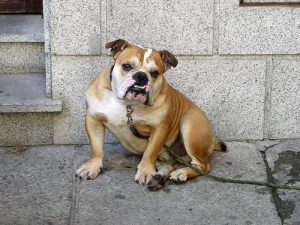Spanish Bulldog


Written and verified by the vet Eugenio Fernández Suárez
History of the Spanish Bulldog
King Alfonso XI mentioned this breed in one of his Montería treatises that took place during the 15th century. It also appears in Velázquez paintings, and in the writings of Cervantes.
Traits and behavior
This dog has a large head, a muscular jaw, and a strong build. It can weigh up to 40 kg. Its fur can have many different colors, such as gray and red stripes, with thick wrinkly skin.
The Spanish Bulldog’s behavior is similar to that of other hunting dogs. It’s a restless animal that needs long walks and to be active constantly. It’s a complicated dog to manage, and difficult to train, but it’s very faithful.
The Spanish Bulldog’s behavior is similar to that of other hunting dogs. It’s a restless animal that needs long walks and to be active constantly.
Care
As mentioned above, this breed needs to be active. You should walk this animal at least three times a day. Although it has short fur, you should brush it at least once a week and keep its ears, eyes and mouth clean. Pay special attention to the folds on its face, because they can be a good place for dermatitis.
Jobs
History of the Spanish Bulldog
King Alfonso XI mentioned this breed in one of his Montería treatises that took place during the 15th century. It also appears in Velázquez paintings, and in the writings of Cervantes.
Traits and behavior
This dog has a large head, a muscular jaw, and a strong build. It can weigh up to 40 kg. Its fur can have many different colors, such as gray and red stripes, with thick wrinkly skin.
The Spanish Bulldog’s behavior is similar to that of other hunting dogs. It’s a restless animal that needs long walks and to be active constantly. It’s a complicated dog to manage, and difficult to train, but it’s very faithful.
The Spanish Bulldog’s behavior is similar to that of other hunting dogs. It’s a restless animal that needs long walks and to be active constantly.
Care
As mentioned above, this breed needs to be active. You should walk this animal at least three times a day. Although it has short fur, you should brush it at least once a week and keep its ears, eyes and mouth clean. Pay special attention to the folds on its face, because they can be a good place for dermatitis.
Jobs
This text is provided for informational purposes only and does not replace consultation with a professional. If in doubt, consult your specialist.







